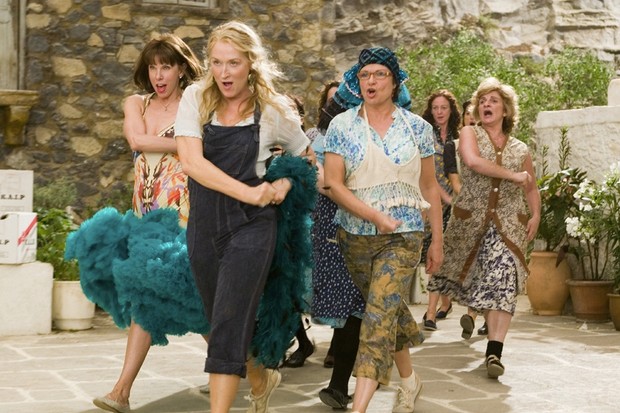The Challenges and Triumphs of Producing a Musical That's Been a Popular Movie
Cassie Smith
Entering rehearsals for the Abba musical, Mamma Mia, at the Youngstown Playhouse, the following quotation was made:
“In the 2008 movie-musical adaptation of Mamma Mia, Meryl Streep’s former love-interests, the possible father-figures to daughter Sophie, are all attractive in their own respects. While our job is to tell their story, we have the challenge of separating ourselves from what the audience ‘knows’ and ‘believes’ about the characters: Donna Sheridan’s suitors may not all have that ‘leading man’ look, and yet they can still effectively convey the message behind the show.”
Simply put, our job as theatre performers and creators, when producing something so commonly known by audiences, is not to replicate exactly what is seen on screen, rather we have to embrace what and who we have and let the integrity of the characters shine.
While a carbon copy of the movie would be great, the feasibility of such a feat is practically impossible, especially within the community theatre setting. With someone as accomplished as Meryl Streep, for example, it’s impossible and unfair to ask someone in any theatre environment to give the same performance. For one, these two individuals have different approaches to the character, and their motivations behind taking the role could vary simply because one received a paycheck. While a local actress could have a faithful following, Streep’s reach and notable resume definitely pull in a large and enthusiastic crowd. While this doesn’t mean a local actress can’t deliver a stellar performance in the role, it does mean she must fight harder to demonstrate that her interpretation is also valid.
The look of the movie can also hinder the success of the show in the audience’s eyes. Though those who are familiar with the musical (which originated prior to the movie) know and appreciate the show’s costumes and set by Mark Thompson, movie audiences take notice of Ann Roth’s wardrobe pieces and Barbara Herman-Skelding’s location-based work. Both Broadway and the movie were supported by box office-worthy budgets with investors whom could produce more capital should the creative team need it. Especially in community theatre, costume and set pieces are creatively construed, and despite the successes these can produce, audiences still refer back to the designs they saw on the big screen. And while the finances of a local performance seldom compare to those of a Broadway budget or that of a movie, it’s not to say a cohesive and impactful design is impossible to obtain on the smaller scale.
This issue is heightened when transforming an animated movie to a stage adaptation. When presenting a production of Disney’s The Little Mermaid, the audience expects to see believable mermaids on stage. And while there are several interpretations of how to create a mermaid for the real world, it’s difficult to match the fluidity seamlessly established by the animation team of the 1989 film. The vastly different locations, whether underwater or on land, are an undertaking to recreate staged so that it feels honest and lifelike, whereas the movie has no problem convincing people of the different worlds and the effortless transitions between them.
What’s really important in all of this is the audience’s suspension of belief and preconceived facts about the movie or show. Instead of assuming that every guy who is Harry Bright, the role held by Colin Firth, will be just as awkward in his dance moves, audiences have to realize that it could be better (or worse) and still be effective. If an audience can witness how minimal set changes still support the arc of the story, they can fathom and stand behind different interpretations of Donna’s taverna lifestyle. Or that including more Abba hits in the show brings new and believable depth to the characters that a movie’s restraints aren’t designed to support.
Nonetheless, the important take away is simple: the beauty of theatre and movies is that it’s up to the creative team to unite in vision and effort to fashion entertainment that captivates the audience. Whether it's recreating a moment made famous by one, embracing transitions, or completely trying something different, what matters is that each interpretation delivers the heart of the narrative and the audience leaves feeling changed for the better.
Cassie is a 2018 graduate of The Ohio State University with a degree in theatre and strategic communication. She's fascinated with the human narrative, passionate about seeing people succeed on and off stage, and is currently applying to grad school. @Cass175
